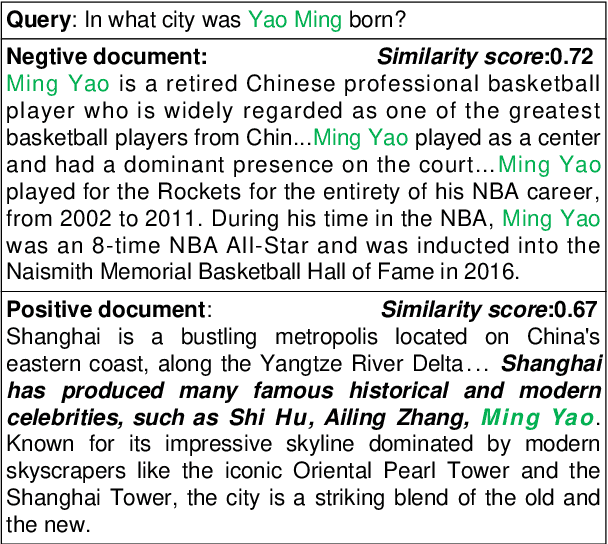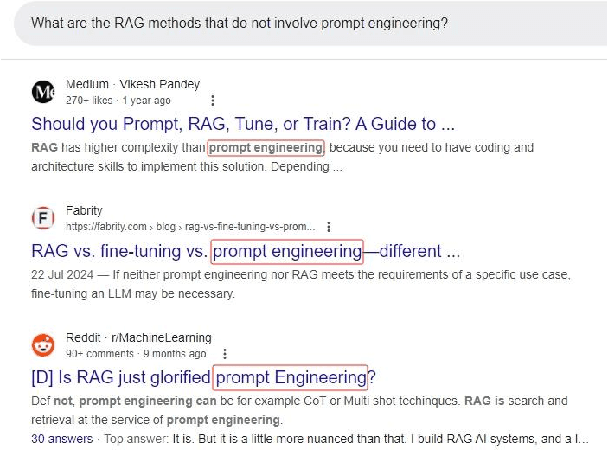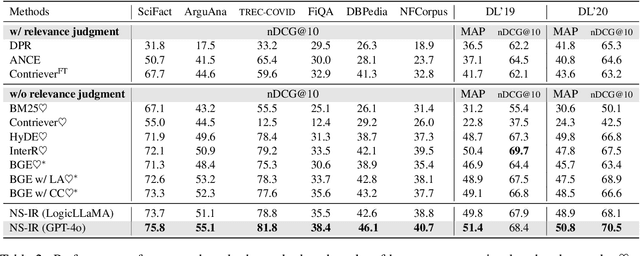Yanghua Xiao
HINT: Helping Ineffective Rollouts Navigate Towards Effectiveness
Oct 10, 2025Abstract:Reinforcement Learning (RL) has become a key driver for enhancing the long chain-of-thought (CoT) reasoning capabilities of Large Language Models (LLMs). However, prevalent methods like GRPO often fail when task difficulty exceeds the model's capacity, leading to reward sparsity and inefficient training. While prior work attempts to mitigate this using off-policy data, such as mixing RL with Supervised Fine-Tuning (SFT) or using hints, they often misguide policy updates In this work, we identify a core issue underlying these failures, which we term low training affinity. This condition arises from a large distributional mismatch between external guidance and the model's policy. To diagnose this, we introduce Affinity, the first quantitative metric for monitoring exploration efficiency and training stability. To improve Affinity, we propose HINT: Helping Ineffective rollouts Navigate Towards effectiveness, an adaptive hinting framework. Instead of providing direct answers, HINT supplies heuristic hints that guide the model to discover solutions on its own, preserving its autonomous reasoning capabilities. Extensive experiments on mathematical reasoning tasks show that HINT consistently outperforms existing methods, achieving state-of-the-art results with models of various scales, while also demonstrating significantly more stable learning and greater data efficiency.Code is available on Github.
Accelerated Evolving Set Processes for Local PageRank Computation
Oct 09, 2025Abstract:This work proposes a novel framework based on nested evolving set processes to accelerate Personalized PageRank (PPR) computation. At each stage of the process, we employ a localized inexact proximal point iteration to solve a simplified linear system. We show that the time complexity of such localized methods is upper bounded by $\min\{\tilde{\mathcal{O}}(R^2/\epsilon^2), \tilde{\mathcal{O}}(m)\}$ to obtain an $\epsilon$-approximation of the PPR vector, where $m$ denotes the number of edges in the graph and $R$ is a constant defined via nested evolving set processes. Furthermore, the algorithms induced by our framework require solving only $\tilde{\mathcal{O}}(1/\sqrt{\alpha})$ such linear systems, where $\alpha$ is the damping factor. When $1/\epsilon^2\ll m$, this implies the existence of an algorithm that computes an $\ epsilon $-approximation of the PPR vector with an overall time complexity of $\tilde{\mathcal{O}}\left(R^2 / (\sqrt{\alpha}\epsilon^2)\right)$, independent of the underlying graph size. Our result resolves an open conjecture from existing literature. Experimental results on real-world graphs validate the efficiency of our methods, demonstrating significant convergence in the early stages.
CultureScope: A Dimensional Lens for Probing Cultural Understanding in LLMs
Sep 19, 2025Abstract:As large language models (LLMs) are increasingly deployed in diverse cultural environments, evaluating their cultural understanding capability has become essential for ensuring trustworthy and culturally aligned applications. However, most existing benchmarks lack comprehensiveness and are challenging to scale and adapt across different cultural contexts, because their frameworks often lack guidance from well-established cultural theories and tend to rely on expert-driven manual annotations. To address these issues, we propose CultureScope, the most comprehensive evaluation framework to date for assessing cultural understanding in LLMs. Inspired by the cultural iceberg theory, we design a novel dimensional schema for cultural knowledge classification, comprising 3 layers and 140 dimensions, which guides the automated construction of culture-specific knowledge bases and corresponding evaluation datasets for any given languages and cultures. Experimental results demonstrate that our method can effectively evaluate cultural understanding. They also reveal that existing large language models lack comprehensive cultural competence, and merely incorporating multilingual data does not necessarily enhance cultural understanding. All code and data files are available at https://github.com/HoganZinger/Culture
Curse of Knowledge: When Complex Evaluation Context Benefits yet Biases LLM Judges
Sep 03, 2025Abstract:As large language models (LLMs) grow more capable, they face increasingly diverse and complex tasks, making reliable evaluation challenging. The paradigm of LLMs as judges has emerged as a scalable solution, yet prior work primarily focuses on simple settings. Their reliability in complex tasks--where multi-faceted rubrics, unstructured reference answers, and nuanced criteria are critical--remains understudied. In this paper, we constructed ComplexEval, a challenge benchmark designed to systematically expose and quantify Auxiliary Information Induced Biases. We systematically investigated and validated 6 previously unexplored biases across 12 basic and 3 advanced scenarios. Key findings reveal: (1) all evaluated models exhibit significant susceptibility to these biases, with bias magnitude scaling with task complexity; (2) notably, Large Reasoning Models (LRMs) show paradoxical vulnerability. Our in-depth analysis offers crucial insights for improving the accuracy and verifiability of evaluation signals, paving the way for more general and robust evaluation models.
AgentGroupChat-V2: Divide-and-Conquer Is What LLM-Based Multi-Agent System Need
Jun 18, 2025Abstract:Large language model based multi-agent systems have demonstrated significant potential in social simulation and complex task resolution domains. However, current frameworks face critical challenges in system architecture design, cross-domain generalizability, and performance guarantees, particularly as task complexity and number of agents increases. We introduces AgentGroupChat-V2, a novel framework addressing these challenges through three core innovations: (1) a divide-and-conquer fully parallel architecture that decomposes user queries into hierarchical task forest structures enabling dependency management and distributed concurrent processing. (2) an adaptive collaboration engine that dynamically selects heterogeneous LLM combinations and interaction modes based on task characteristics. (3) agent organization optimization strategies combining divide-and-conquer approaches for efficient problem decomposition. Extensive experiments demonstrate AgentGroupChat-V2's superior performance across diverse domains, achieving 91.50% accuracy on GSM8K (exceeding the best baseline by 5.6 percentage points), 30.4% accuracy on competition-level AIME (nearly doubling other methods), and 79.20% pass@1 on HumanEval. Performance advantages become increasingly pronounced with higher task difficulty, particularly on Level 5 MATH problems where improvements exceed 11 percentage points compared to state-of-the-art baselines. These results confirm that AgentGroupChat-V2 provides a comprehensive solution for building efficient, general-purpose LLM multi-agent systems with significant advantages in complex reasoning scenarios. Code is available at https://github.com/MikeGu721/AgentGroupChat-V2.
Logical Consistency is Vital: Neural-Symbolic Information Retrieval for Negative-Constraint Queries
May 29, 2025



Abstract:Information retrieval plays a crucial role in resource localization. Current dense retrievers retrieve the relevant documents within a corpus via embedding similarities, which compute similarities between dense vectors mainly depending on word co-occurrence between queries and documents, but overlook the real query intents. Thus, they often retrieve numerous irrelevant documents. Particularly in the scenarios of complex queries such as \emph{negative-constraint queries}, their retrieval performance could be catastrophic. To address the issue, we propose a neuro-symbolic information retrieval method, namely \textbf{NS-IR}, that leverages first-order logic (FOL) to optimize the embeddings of naive natural language by considering the \emph{logical consistency} between queries and documents. Specifically, we introduce two novel techniques, \emph{logic alignment} and \emph{connective constraint}, to rerank candidate documents, thereby enhancing retrieval relevance. Furthermore, we construct a new dataset \textbf{NegConstraint} including negative-constraint queries to evaluate our NS-IR's performance on such complex IR scenarios. Our extensive experiments demonstrate that NS-IR not only achieves superior zero-shot retrieval performance on web search and low-resource retrieval tasks, but also performs better on negative-constraint queries. Our scource code and dataset are available at https://github.com/xgl-git/NS-IR-main.
Can LLMs Learn to Map the World from Local Descriptions?
May 27, 2025Abstract:Recent advances in Large Language Models (LLMs) have demonstrated strong capabilities in tasks such as code and mathematics. However, their potential to internalize structured spatial knowledge remains underexplored. This study investigates whether LLMs, grounded in locally relative human observations, can construct coherent global spatial cognition by integrating fragmented relational descriptions. We focus on two core aspects of spatial cognition: spatial perception, where models infer consistent global layouts from local positional relationships, and spatial navigation, where models learn road connectivity from trajectory data and plan optimal paths between unconnected locations. Experiments conducted in a simulated urban environment demonstrate that LLMs not only generalize to unseen spatial relationships between points of interest (POIs) but also exhibit latent representations aligned with real-world spatial distributions. Furthermore, LLMs can learn road connectivity from trajectory descriptions, enabling accurate path planning and dynamic spatial awareness during navigation.
ARM: Adaptive Reasoning Model
May 26, 2025



Abstract:While large reasoning models demonstrate strong performance on complex tasks, they lack the ability to adjust reasoning token usage based on task difficulty. This often leads to the "overthinking" problem -- excessive and unnecessary reasoning -- which, although potentially mitigated by human intervention to control the token budget, still fundamentally contradicts the goal of achieving fully autonomous AI. In this work, we propose Adaptive Reasoning Model (ARM), a reasoning model capable of adaptively selecting appropriate reasoning formats based on the task at hand. These formats include three efficient ones -- Direct Answer, Short CoT, and Code -- as well as a more elaborate format, Long CoT. To train ARM, we introduce Ada-GRPO, an adaptation of Group Relative Policy Optimization (GRPO), which addresses the format collapse issue in traditional GRPO. Ada-GRPO enables ARM to achieve high token efficiency, reducing tokens by an average of 30%, and up to 70%, while maintaining performance comparable to the model that relies solely on Long CoT. Furthermore, not only does it improve inference efficiency through reduced token generation, but it also brings a 2x speedup in training. In addition to the default Adaptive Mode, ARM supports two additional reasoning modes: 1) Instruction-Guided Mode, which allows users to explicitly specify the reasoning format via special tokens -- ideal when the appropriate format is known for a batch of tasks. 2) Consensus-Guided Mode, which aggregates the outputs of the three efficient formats and resorts to Long CoT in case of disagreement, prioritizing performance with higher token usage.
BookWorld: From Novels to Interactive Agent Societies for Creative Story Generation
Apr 20, 2025Abstract:Recent advances in large language models (LLMs) have enabled social simulation through multi-agent systems. Prior efforts focus on agent societies created from scratch, assigning agents with newly defined personas. However, simulating established fictional worlds and characters remain largely underexplored, despite its significant practical value. In this paper, we introduce BookWorld, a comprehensive system for constructing and simulating book-based multi-agent societies. BookWorld's design covers comprehensive real-world intricacies, including diverse and dynamic characters, fictional worldviews, geographical constraints and changes, e.t.c. BookWorld enables diverse applications including story generation, interactive games and social simulation, offering novel ways to extend and explore beloved fictional works. Through extensive experiments, we demonstrate that BookWorld generates creative, high-quality stories while maintaining fidelity to the source books, surpassing previous methods with a win rate of 75.36%. The code of this paper can be found at the project page: https://bookworld2025.github.io/.
LITE: LLM-Impelled efficient Taxonomy Evaluation
Apr 02, 2025Abstract:This paper presents LITE, an LLM-based evaluation method designed for efficient and flexible assessment of taxonomy quality. To address challenges in large-scale taxonomy evaluation, such as efficiency, fairness, and consistency, LITE adopts a top-down hierarchical evaluation strategy, breaking down the taxonomy into manageable substructures and ensuring result reliability through cross-validation and standardized input formats. LITE also introduces a penalty mechanism to handle extreme cases and provides both quantitative performance analysis and qualitative insights by integrating evaluation metrics closely aligned with task objectives. Experimental results show that LITE demonstrates high reliability in complex evaluation tasks, effectively identifying semantic errors, logical contradictions, and structural flaws in taxonomies, while offering directions for improvement. Code is available at https://github.com/Zhang-l-i-n/TAXONOMY_DETECT .
 Add to Chrome
Add to Chrome Add to Firefox
Add to Firefox Add to Edge
Add to Edge